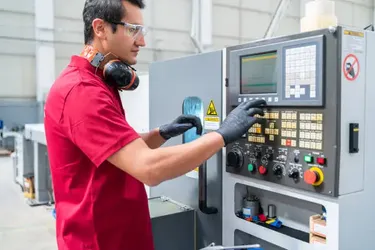Can a Milling Machine Cut Gears?
When it comes to gear production, you might wonder: "Can a milling machine cut gears?" The short answer is yes! Milling machines are versatile tools capable of shaping and cutting gears to precise specifications. But how does this process work, and what should you know before starting your gear-cutting project? Let's dive into the details to explore how a milling machine can be used for gear cutting, the benefits, and the steps involved in making accurate, high-quality gears.
What is a Milling Machine?
A milling machine is a powerful tool that uses rotary cutters to remove material from a workpiece, shaping it into a specific design. Unlike other machining tools, a milling machine can move in multiple axes, allowing it to create complex shapes and surfaces. With the right setup, this versatility makes it perfect for cutting gears of various shapes and sizes.
How Does a Milling Machine Cut Gears?
To cut gears on a milling machine, you need the appropriate cutting tools, such as an involute gear cutter or a form cutter, and a method for indexing the workpiece. Here is a simplified breakdown of the steps involved:
Gear Design and Planning: Start by designing your gear. This involves determining the number of teeth, pitch, and pressure angle. You can use software tools or templates to create a precise design that matches your needs.
Setup the Milling Machine: Secure the workpiece in place using a dividing head or rotary table, which allows the gear blank to be indexed at specific angles. Set the milling machine to the correct speed and feed for your material.
Choose the Right Cutter: Select a cutter that matches the gear profile you need. Involute gear cutters are commonly used for standard spur gears, while other specialized cutters might be needed for helical or bevel gears.
Gear Cutting Process: With everything set up, start the milling process. The cutter removes material to create the gear's teeth, with each pass cutting deeper until the desired shape and depth are achieved.
Final Adjustments and Quality Check: After the initial cutting, refine the gear’s shape with finishing passes, and inspect the gear for accuracy and quality. Ensure that the teeth are evenly spaced and that there are no burrs or imperfections.
Types of Gears You Can Cut with a Milling Machine
A milling machine can cut various types of gears, including:
Spur Gears: The most common type, featuring straight teeth parallel to the gear's axis.
Helical Gears: These gears have angled teeth, which provide smoother and quieter operation than spur gears.
Bevel Gears: Gears with conical surfaces used to change the direction of a shaft’s rotation.
Worm Gears: Used for large reductions in speed, these gears have a screw-like thread meshed with a gear wheel.
Each type requires different setups and cutters, but a milling machine is capable of producing all these types with precision.
Benefits of Cutting Gears with a Milling Machine
Cutting gears with a milling machine offers several advantages:
Versatility: Milling machines can handle various types of gears, from simple spur gears to complex helical or bevel gears.
Precision: With the right setup, milling machines provide high accuracy, essential for gears that need to mesh perfectly.
Cost-Effectiveness: Instead of investing in specialized gear-cutting machines, you can use a milling machine you may already own, reducing costs for smaller production runs.
Customization: Milling machines allow for a high degree of customization, making them ideal for prototyping or custom orders.
Challenges and Considerations
While milling machines are effective for gear cutting, there are a few challenges to consider:
Tooling Costs: Special gear cutters can be expensive, especially if you need different sizes or types.
Setup Time: Properly setting up the machine for gear cutting can be time-consuming, especially for beginners.
Learning Curve: Understanding the specifics of gear design and milling machine operation requires practice and expertise.
Despite these challenges, milling machines remain a popular choice for gear cutting due to their flexibility and precision.
Tips for Successfully Cutting Gears with a Milling Machine
Choose Quality Cutters: Invest in high-quality gear cutters that are suited for the type of gear you are cutting.
Master the Setup: Take time to accurately set up the milling machine, ensuring that the workpiece is securely clamped and the cutter is properly aligned.
Use Coolants: To prolong the life of your cutter and achieve a better finish, use cutting fluids or coolants during the process.
Practice Makes Perfect: If you’re new to gear cutting, practice on scrap material first to fine-tune your process and avoid costly mistakes.
Conclusion
Cutting gears with a milling machine is not only possible but also a practical option for many workshops. Whether you are producing a few custom gears or setting up for a small production run, a milling machine provides the flexibility, precision, and cost-effectiveness needed to get the job done right. While there is a learning curve involved, mastering this skill opens up a range of possibilities in the world of machining.
Related blog: How do I choose a milling machine?



